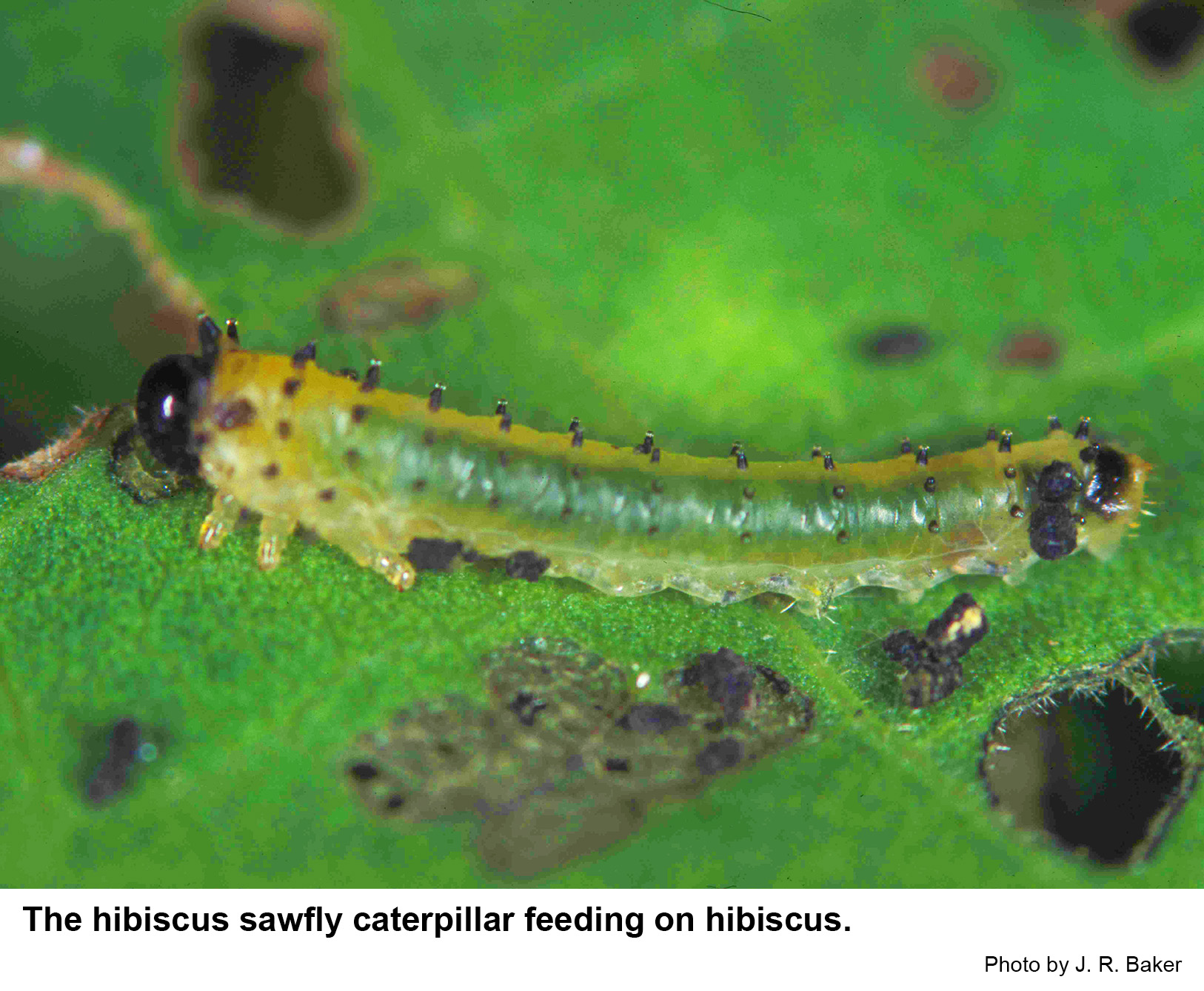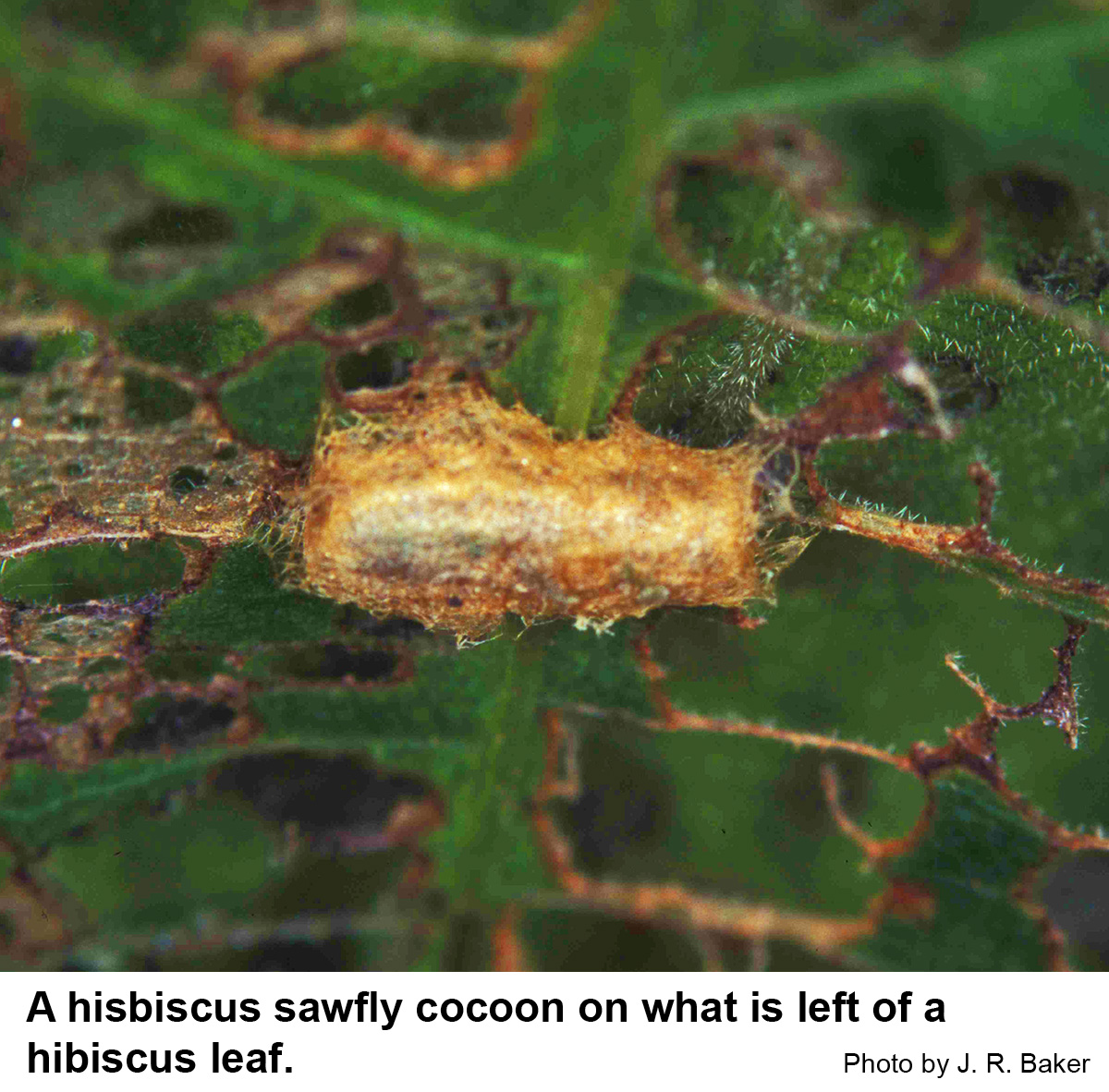Description and Biology
Hibiscus sawfly adults, Atomacera decepta, are small (3⁄16 inch), black, flylike insects in the family Argidae. The thorax is reddish brown on top. We have no detailed study of the life history of the hibiscus sawfly, but the caterpillars have been found from May to October. The eggs are inserted into the leaf tissue one at a time near the margin and a small "blister" forms over each egg. The tiny, pale green worms hatch and feed on the lower leaf surface. Older caterpillars have black heads and tiny black spines on each body segment. They are slightly gregarious with up to three larvae feeding on the bottom or top of one leaf. When mature the larvae spin a tough silken cocoon on the base of the plant or nearby. From that emerges a new adult to mate and lay eggs. Probably six generations occur per year.
Host Plants
The caterpillars of Atomacera decepta feed on hibiscus, hollyhock, mallow and perhaps other members of the cotton family but usually not rose of Sharon, okra, or cotton. This insect is called the hibiscus sawfly as hibiscus is its most frequently reported host plant. This sawfly sometimes completely skeletonizes the leaves of hollyhock, leaving a lacy network of leaf veins.
Residential Recommendation
This insect should not be particularly resistant to pesticides. Sevin or any other pesticide labeled for landscape insect pests should give more than adequate control. Do not spray open blossoms to avoid killing pollinators.
References
- Controlling the Hibiscus Sawflies. Traynor, K. S. No Date. The Master Gardeners, Frederick County Master Gardener Program. Frederick County Cooperative Extension.
- Hibiscus Sawfly, Atomacera decepta, Hymenoptera: Argidae. Hiskes, R. 2021 (update). Connecticut Agr. Exp. Station.
- Mallow or hibiscus sawfly. Barnes, J. K. 2005. Univ. of Arkansas Arthropod Museum Arthropod Notes No. 36.
- Extension Plant Pathology Publications and Factsheets
- Horticultural Science Publications
- North Carolina Agricultural Chemicals Manual
For assistance with a specific problem, contact your local N.C. Cooperative Extension Center.
This Factsheet has not been peer reviewed.
Publication date: May 19, 2014
Reviewed/Revised: March 25, 2024
Recommendations for the use of agricultural chemicals are included in this publication as a convenience to the reader. The use of brand names and any mention or listing of commercial products or services in this publication does not imply endorsement by NC State University or N.C. A&T State University nor discrimination against similar products or services not mentioned. Individuals who use agricultural chemicals are responsible for ensuring that the intended use complies with current regulations and conforms to the product label. Be sure to obtain current information about usage regulations and examine a current product label before applying any chemical. For assistance, contact your local N.C. Cooperative Extension county center.
N.C. Cooperative Extension prohibits discrimination and harassment regardless of age, color, disability, family and marital status, gender identity, national origin, political beliefs, race, religion, sex (including pregnancy), sexual orientation and veteran status.



